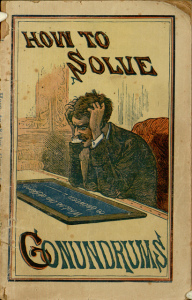This post continues with Week 2 in a series of posts on topics that relate to writer’s residencies. I started at Week 1, and am counting up. You can find Week 3 here.

Practice meets play. CC image “piano practice” by woodleywonderworks on Flickr. Some rights reserved.
Writing exercises are billed as a way to break through writer’s block, and a way to greater creativity if we are stuck in a rut or a theme. Be loose! writing exercises always tell us. Let it flow!
I’ve sometimes wondered what happens to all those writing exercises once we are done with them. I imagine them as a sort of Dr. Seuss creature, fluffy and green, being left at the side of the road and abandoned after the cuteness has worn off. So sad.
I’m not alone with this question. A blog post I recently read on Writer’s Digest makes the same point. Most of these exercises end up on dusty little fragments of paper or perhaps digital files that get lost in our computer’s file structure. They accumulate in corners until we forget about them, and if we happen to discover them eons hence, we often throw them out like trash. Is this really the wretched fate that awaits every writing exercise? Are they always only our creative trash?
Writing exercises as a tool
I’ve been thinking about writing exercises recently because ironically, since I’ve started working on my project for the writer’s residency, I’ve done very little writing. I am knee-deep in research. My writing takes the form of notes; I haven’t tinkered with the draft manuscript once I started pulling sources. Noticing this, I wondered if writing exercises might be useful.
Writing is a skill that improves with practice, like playing the piano. The more you practice, the more you can play (see more about this in my post on writing warmups). I don’t want to be all rusty and cold when I do start writing again on this manuscript. Plus, short creative writing exercises can be great fun (the billing ain’t all hype). Last week I tried one with nouns and verbs. My favorite sentence from that exercise is: “The toadstool listens to the conversations of the ants as they pass by.”
Yay! Fun! (You can’t steal it though; it’s mine.)
However, while practicing is great, eventually, I want to play Beethoven and Chopin. Or, in this case, I want a finished manuscript, dammit.
Use the tool for a specific purpose
Can writing exercises be more than fluffy green creatures we abandon for the Next Big Thing? More specifically, can I use writing exercises to bootstrap my way forward on the draft of my novel, instead of throwing them in the dustbin?
For the next month, I’m going to test these questions out on my own writing. My premise is that yes, I can use the material that comes out of writing exercises for my bigger, specific project… IF I structure the exercises correctly, and I do a small amount of pre-exercising. I don’t want to plan what I’m going to write — that would go against every tenet of free-form exercises to begin with — I want to be intentional about how I write.
The Writer’s Digest article suggests a number of questions to guide the development of writing exercises. Because my creative life is circling the residency right now, I am going in a slightly different direction.
The plan
I’m going to set up a 2-week alternating schedule. In the first week of the pair, I’m going to commit to doing a writing exercise (preferably short), one day a week, Monday through Friday. In doing the exercise, I am going to keep my project, the characters, the setting, and the main point of tension, in mind. I’ll allow myself to not have to write about these aspects EVERY single exercise, though I do want to be thinking about them.
In the second week, I’ll revisit the exercises I wrote in week one, with a view to taking one of the following two steps:
- incorporating the writing exercise into a scene or narrative I’ve already written or sketched out;
- re-writing a scene or narrative, using part of the writing exercise as the backbone or central point.
This will give me two sets of writing exercise development to work with in March.
Rules of engagement: writing exercises should be kept brief (~500 words), as should the scenes I am writing or re-writing (<1000 words). Time spent on the exercises in both weeks should not exceed half an hour each day. The point is I want to use quick bursts of writing to keep me in touch with both my writing muscles and my story development, while I am involved in background research. I want to avoid sinking into a self-critical/editorial morass.
I’ll report back here after the month is up with my thoughts on the practice — has my premise proven to be correct? Can writing exercises “recycled,” as it were, instead of falling onto the creative landfill?
If anyone wants to test out this way of playing with writing exercises, I’d love to hear about your experience! Feel free to modify the outline so that the work suits your goals, and report back here if you feel like doing so. Here’s to keeping our craft fresh, our writing out of landfills, and our stories in the forefront of our minds.




